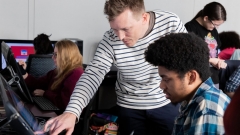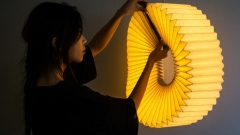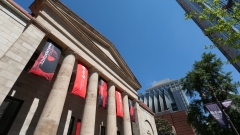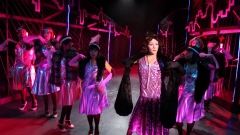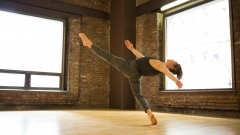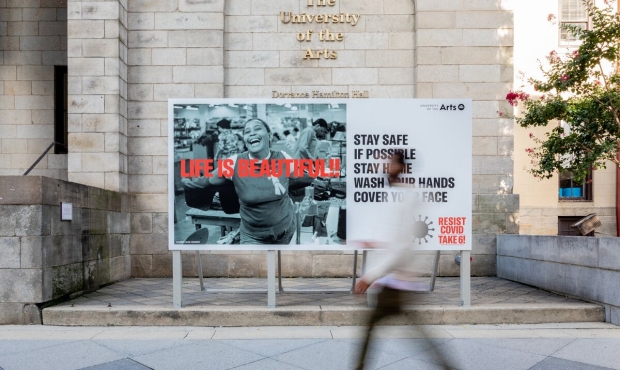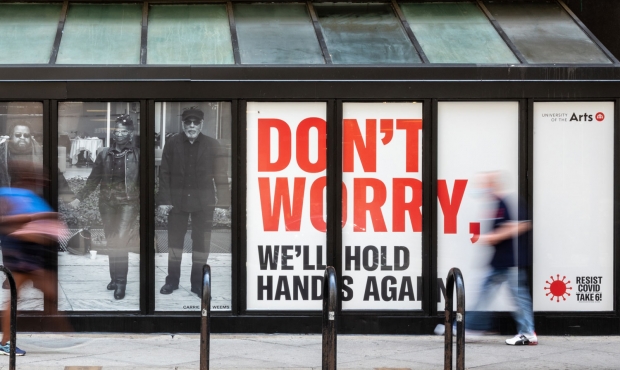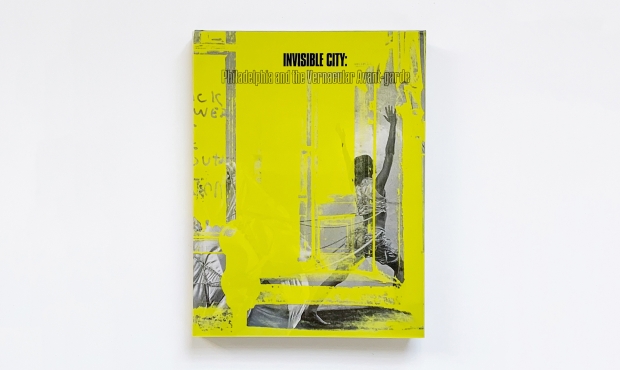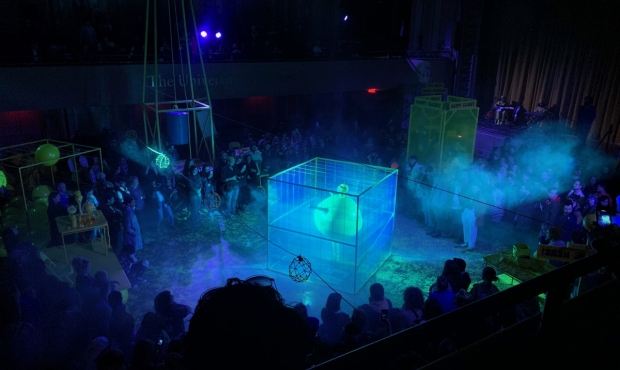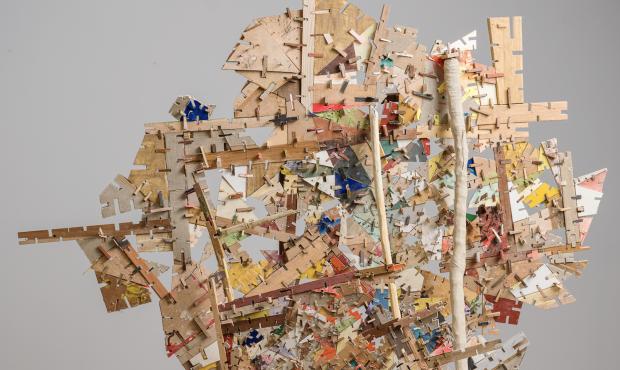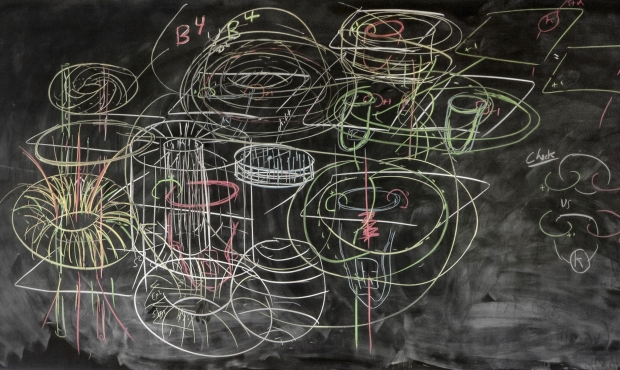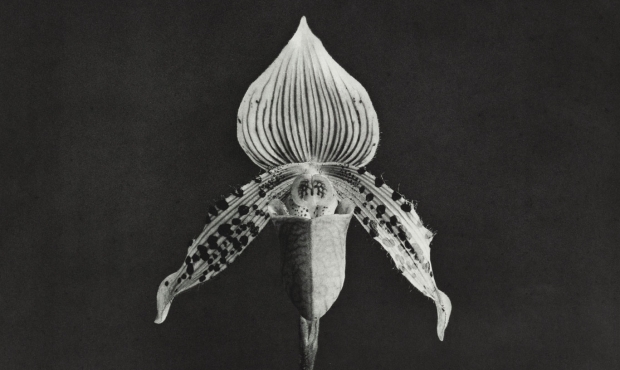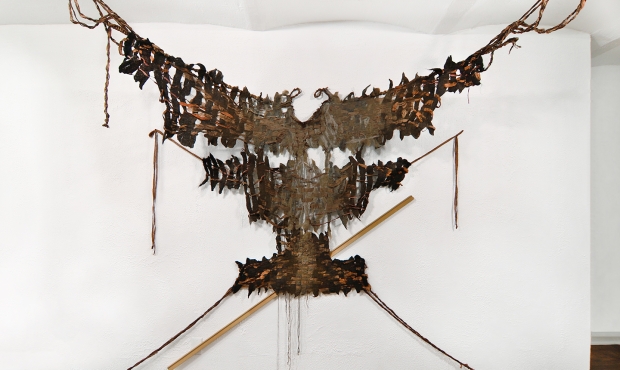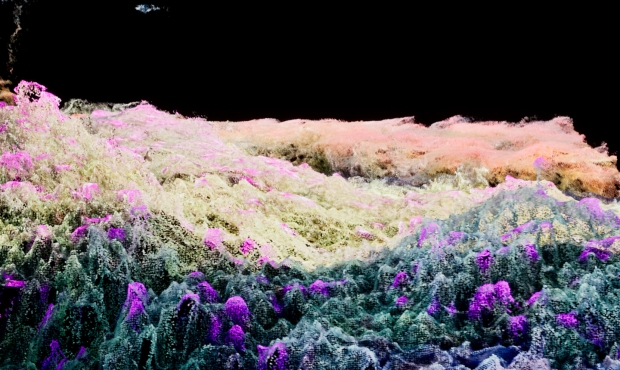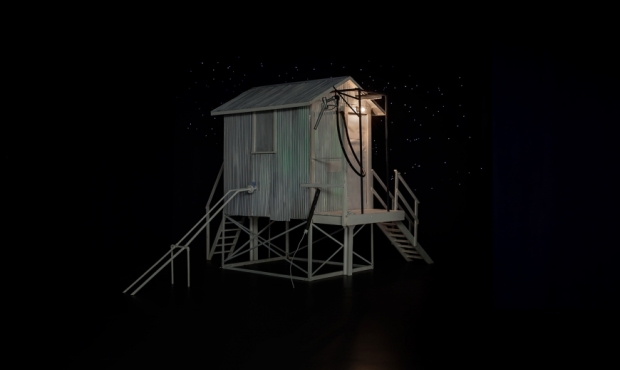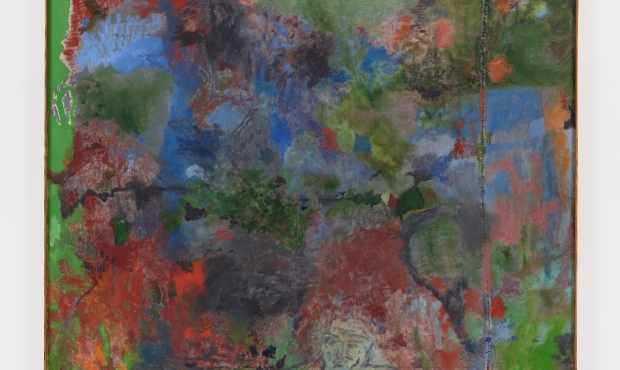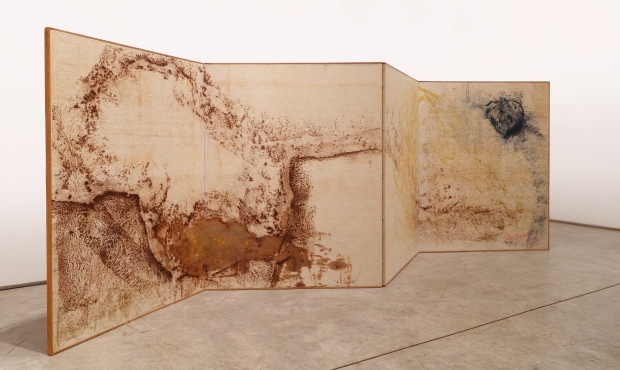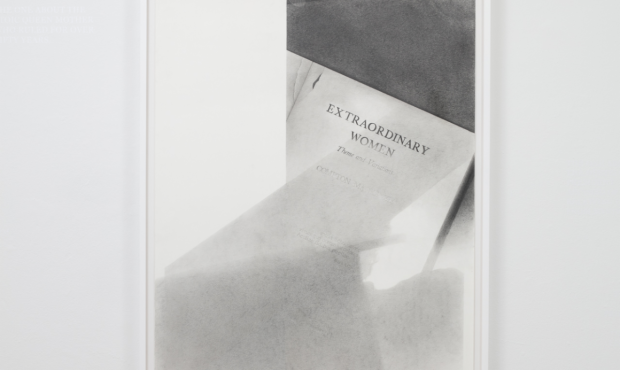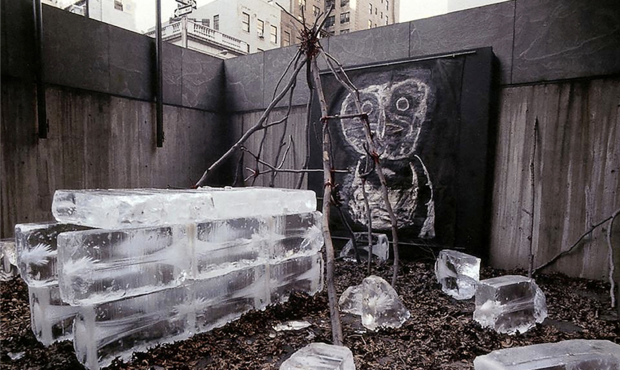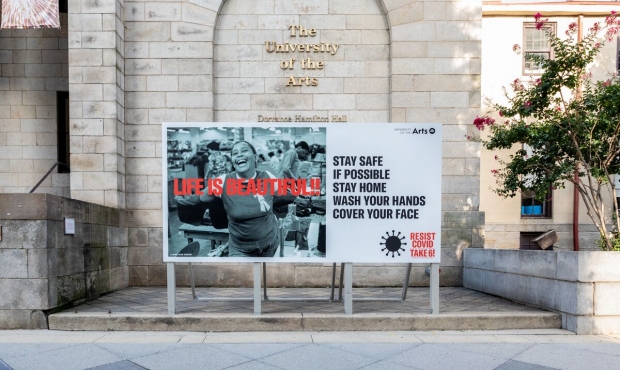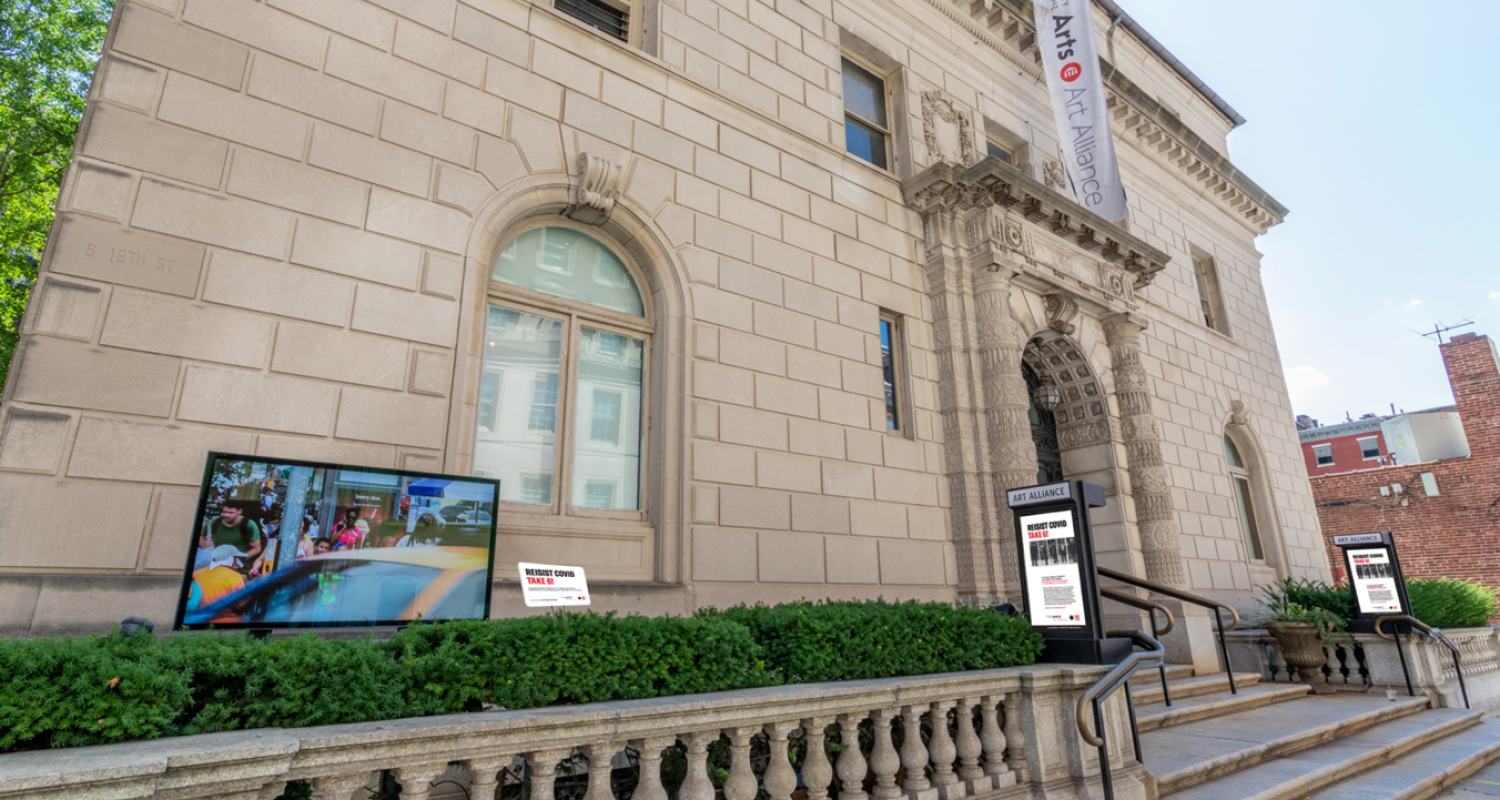
Art Alliance
Carrie Mae Weems, "Resist Covid Take 6!" (Installation view). Courtesy of the artist and University of the Art.
The Art Alliance galleries are currently closed for installation and will reopen on Friday, June 14.
About the Art Alliance
Mission
The University of the Arts is committed to inspiring, educating and preparing innovative artists and creative leaders for the arts of the twenty-first century.
Uniting two century-long legacies, the Philadelphia Art Alliance at the University of the Arts is a center that advances the work of makers, performers and practitioners. With a deep rooted understanding of the arts as interrelated allies, we seek new perspectives and generate experiences that investigate experimental impulses. Our fluid approach to the arts reflects our learning environment and cultivates inventiveness, originality and imaginative expression.
History
In 2018, the celebrated Philadelphia Art Alliance merged with University of the Arts, uniting two century-old institutions as the Philadelphia Art Alliance at University of the Arts.
Founded by playwright Christine Wetherill Stevenson in 1915 and located in the former Wetherill Mansion on Rittenhouse Square, the Philadelphia Art Alliance is considered one of the first multidisciplinary art spaces in the U.S. Its remarkable legacy included presenting the work of visionary writers, composers, dancers, musicians, sculptors and architects from Igor Stravinsky and Gertrude Stein to Martha Graham, Buckminster Fuller and Diego Rivera among many other dazzling luminaries.
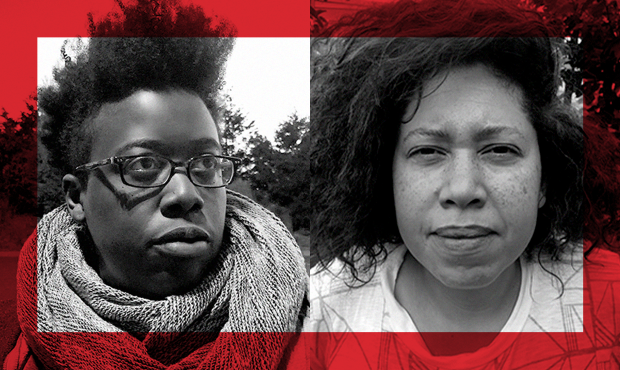
Thursday, Sept. 30, 2021
7-8:30 p.m., Zoom
Nyeema Morgan and Abbey Williams discuss their solo exhibitions on view at the Philadelphia Art Alliance at University of the Arts. This virtual event was free and open to the public.
Visit & Contact
The Art Alliance galleries will be closed for installation until June 13. The galleries will re-open on Friday, June 14 with regular visiting hours, 12pm-5pm.
Gallery Hours:
Tues by appointment
Wed-Fri 10 am–5 pm
Sat 12 pm–5 pm
Accessibility
The Philadelphia Art Alliance at University of the Arts is housed in a historic building with limited accessibility. Please be aware that there is no wheelchair access to the Art Alliance at this time. There are stairs leading up to the entrance of the Art Alliance and stairs leading up to each subsequent floor. The University is currently raising funds for renovations that will make the venue accessible and ADA compliant. We regret that these vital improvements are not in place for current exhibitions. If you have further questions about accessibility or would like to donate to help us fund future improvements, please contact our team by emailing artalliance@uarts.edu.
For inquiries please contact us:
251 S 18th Street
Philadelphia, PA 19103
Michael Ciervo, Director of Exhibitions Management & Head Preparator
mciervo@uarts.edu
Mary Kay Kaminski, Program Coordinator
mkaminski@uarts.edu

